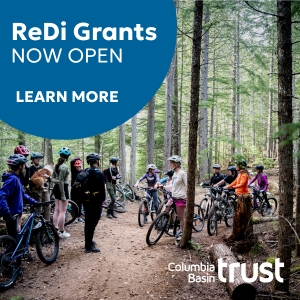
More than 50 new tourism projects throughout B.C. are receiving a total of $21.3 million for shovel-ready infrastructure projects.
The Fernie Nordic Society is one of those projects and is receiving $822,500 for their Elk Valley Nordic Centre Trailhead Enhancement Project. This project will create a dedicated parking area with washroom facilities and a multipurpose trailhead facility.
The projects are part of the second round of the 2021 Community Economic Recovery Infrastructure Program’s (CERIP) Destination Development stream.
In February 2021, in response to the pandemic and through StrongerBC, the Province provided $20 million for 54 projects specifically for tourism through the first round of CERIP. The second investment of $21.3 million in 2022 doubles this, providing a total of $41.3 million for the tourism ecosystem for more than 100 projects.
“We know tourism infrastructure is a priority for communities. Today, we are responding to this call to action from the sector that will further support its recovery efforts from the COVID-19 pandemic,” said Melanie Mark, Minister of Tourism, Arts, Culture and Sport. “Our investment in tourism creates good-paying jobs that directly support local economies now and will elevate our reputation as a world-class destination for the many visitors looking to return to B.C. for years to come.”
The Province is investing an additional $30 million over the next two years to continue investing in tourism infrastructure throughout the province. By helping communities enhance tourism experiences, B.C. will increase its ability to compete as a premium destination.
These funds will strengthen tourism growth and develop emerging tourism opportunities, stimulating the recovery of B.C.’s post-pandemic visitor economy. Continued investments in destination development will increase employment and job creation, and establish more livable communities while enhancing residents’ quality of life and visitors’ experiences.
These investments in implementation-ready tourism infrastructure projects support the recovery and resilience of tourism by creating jobs and developing infrastructure that will attract visitors to B.C. communities in the near and long term. Examples of approved projects include an Indigenous campground development, trail upgrades to accommodate adapted mountain bikes and wheelchairs, arts and culture event space, and beautification and signage projects.
Projects were chosen for their demonstrated tourism benefits to communities and British Columbians, along with new jobs, many of which will provide employment for apprentices, youth, new Canadians, women and Indigenous Peoples. Eligible applicants included local governments, First Nations and non-profit organizations.

The Fernie Nordic Society is a BC registered non-profit organization founded in Fernie in the fall of 2006. From a small group of dedicated nordic ski enthusiasts, the membership of the Society has grown to an impressive 1,607 members during the 2020-2021 season.
From the beginning youth programing and a race team was set up following CrossCountry BC guidelines. In recent years adult and masters lessons have become very popular.
Nordic skiing is widely accepted in the field of exercise physiology as “the best cardiovascular exercise known.” Cross-country skiing uses a large percentage of your muscle mass, and is more efficient and effective than activities using legs alone or arms alone. Fernie is fortunate to have a growing Nordic community and improving facilities!
Quick Facts:
The $30-million tourism infrastructure fund will begin accepting applications in fall 2022 and again in fall 2023. More information will be released this summer.
These new funds will implement actions in response to the Tourism Task Force Recommendations.
As part of Budget 2021-22, the CERIP investment of $21.3 million more than doubles the tourism infrastructure investments made in February 2021.
The $21.3 million provided in the second round of funding supports one infrastructure project in the Cariboo Chilcotin Coast region; nine projects in the Kootenay Rockies region; six in the Northern British Columbia region; 11 in the Thompson Okanagan region; 15 in the Vancouver Coast & Mountains region and 10 in the Vancouver Island region.
























